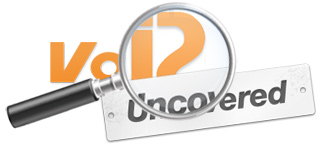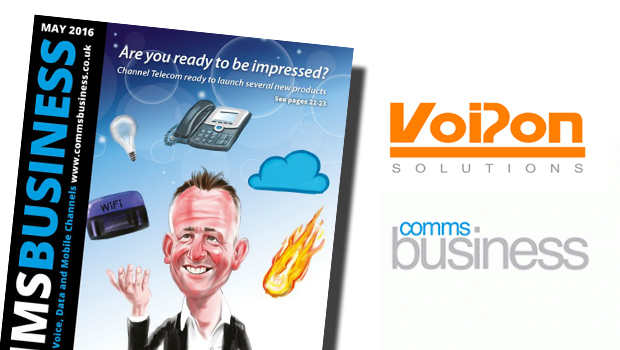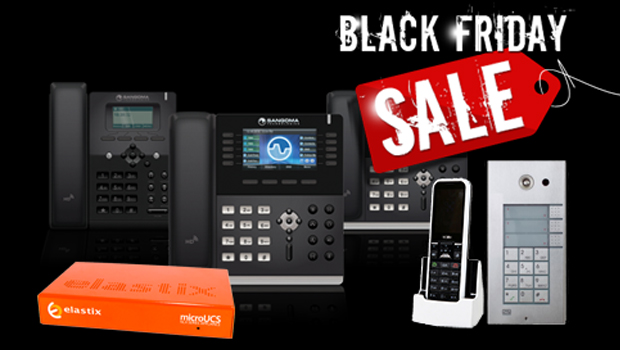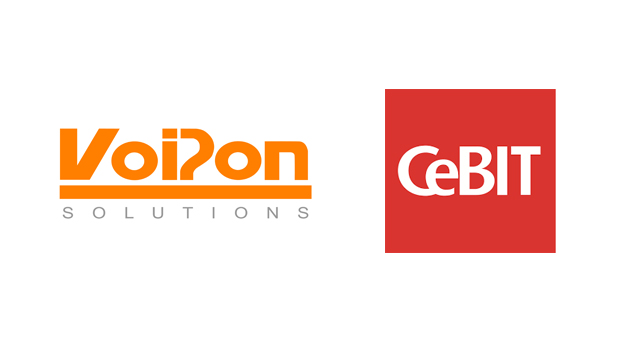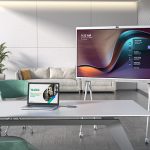VoIPon Solutions have been featured in the May 2016 edition of Comms Business Magazine.
Craig Herrett, COO at VoIPon Solutions, spoke to Comms Business Magazine about VoIP Headsets, including trends, popular models, typical applications and tips for making margin.
What are the trends in the market?
“Sales of VoIP headsets are on the up. This is predominantly through established brands such as VXi, but we are also seeing more VoIP Headset manufacturers coming to the market, such as Avelle, increasing competition and making everyone strive to be better. There is no question that UC and improving levels of interoperability are leading to more people having a headset with their phone.
There are so many benefits after all. With more emphasis on both productivity and comfort in the workplace, more people are using headsets to keep their hands available to type or take notes, and to reduce the possibility of neck and back pain. Wireless headsets present a huge opportunity to increase productivity in the workplace because users will never miss a call, and can move from room to room without ever having to put anyone on hold.
UC and collaboration is the trend. Collaboration software tools that deliver presence, IM, voice, video and full conferences right from the desktop are helping companies work better, faster and smarter. These solutions support many different entry points, including traditional desk phones, PCs, tablets and smartphones, so users can choose the device that makes sense – even if it’s their own, UC doesn’t just mean the software you use, it includes the headset you wear.
VXi, along with others, build end point solutions that make these communication tools work better. Intelligibility and noise-cancellation advantages help drive better collaboration – whether you’re using a USB headset with your PC, or a Bluetooth headset with your smartphone. The cloud is huge, too. Organizations can deploy these tools to every employee, without having to prepare and pay for onsite hardware. It also helps with redundancy and disaster recovery, which was cost prohibitive for most companies. All of which has really helped speed adoption.”
What are the most popular models?
“There is huge demand for USB and Bluetooth wireless headsets. USB brings communications to the desktop. With hundreds of Web and PC-based applications available, there’s a solid need for professional tools in this space. Better tools impact both usage and the quality of service. Bluetooth delivers a hands-free experience with a device that can pair with both your cell phone and PC at the same time, so you’re always connected.
VXi offer the UC ProSet LUX, with real-presence LED indication, displaying whether the user is on the line or not. This is particularly useful in call centres or busy phone offices, where your colleagues can tell if you are on the line or not just by glancing at your headset.
Avelle have products such as the Verso Monaural Headset Kit which has a smart cord, detachable boom arm and quick disconnect point. This Verso headset is designed for comfort with 50mm diameter leatherette ear cushions that also reduce background noise. The Verso is a cost effective and comfortable headset solution.”
How are collaboration applications such as Skype for Business and other UC apps impacting business?
“Skype for Business has played an important role in the rise of Unified Communications Headsets. With the increasing presence of SFB and other softphone clients in the workplace, headsets are becoming the norm, and many users are seeing them completely replacing their physical handset. For this reason, headsets need to be both comfortable and practical, as they will be worn a lot.
Once people have tools like presence, IM, and video available, they start to see voice alone as limiting. Think about your day-to-day. Many times, a quick text is all that’s needed, so being able to IM a colleague (instead of calling or emailing) saves time. On the other hand, a video call can sometimes be the most efficient way to communicate – where you can see people’s expressions, share PC screens, etc. People have become used to these tools and are starting to demand them, which moves us back to the Bluetooth and USB models of headsets.”
Are wireless – DECT/Bluetooth/Wi-Fi headsets, selling well and in what typical applications?
“We are seeing more customers using wireless headsets, whether that be DECT, Bluetooth or Wi-Fi, largely down to the increase of BYOD and softphone use. Ultimately having a wireless headset offers a number of benefits to the user that are becoming more important. For example users can move from their desk and still answer their phone or continue calls, adding an additional level of convenience.
One typical application for a wireless headset would be the use of a softphone, removing the need for a desk phone entirely. Also with the rise of BYOD and applications such as Skype and Viber, wireless headsets are both comfortable and convenient for users.
VXi is still seeing a huge area of growth in the market. They offer superiority in noise cancellation and intelligibility, making them a natural go-to if you want to be able to roam while you communicate and collaborate without distractions and misunderstandings. There’s also convenience. With a wireless headset, you no longer need to stay close to your desk while waiting for a call – you just take your phone with you, increasing both mobility and convenience.”
Are there any sectors that are performing well?
“The public sector in particular is performing well when it comes to headsets. With UC systems being implemented frequently to enable remote working and hot desking, we are seeing a higher demand for headsets.
Call centres consistently require headsets that are convenient and durable. Durability is essential due to the heavy use that they will be subjected to, with users on the phone for the majority of the day. These headsets need to have high quality sound and must be usable in a noisy environment. Features such as real-presence indication are very useful in call centres.
You would find that the majority of companies have at least deployed a UC test bed. Many of these become company-wide deployments fairly rapidly.”
Tips for building sales and making margin
“I think the most important tip is to actually give the customers the information that they need. Make sure you tell them about the key features,benefits, and the compatibility with different applications. We conduct video reviews and give the user a chance to see the product for themselves close up. We also have comparison charts allowing users to decide the best model for them.
Customers will always have questions, so make yourself a source for knowledge. This will help you generate trust with the customer and fundamentally increase future sales. If you’re a good partner to your customer, if you understand their needs, they will recommend you and your business will grow.”
Share this story with your friends or work colleagues. If you want to stay up to date with our latest products, industry news and offers you can sign up to our monthly newsletters, keep up to date with us on Facebook or follow us on twitter @VoIPon.
